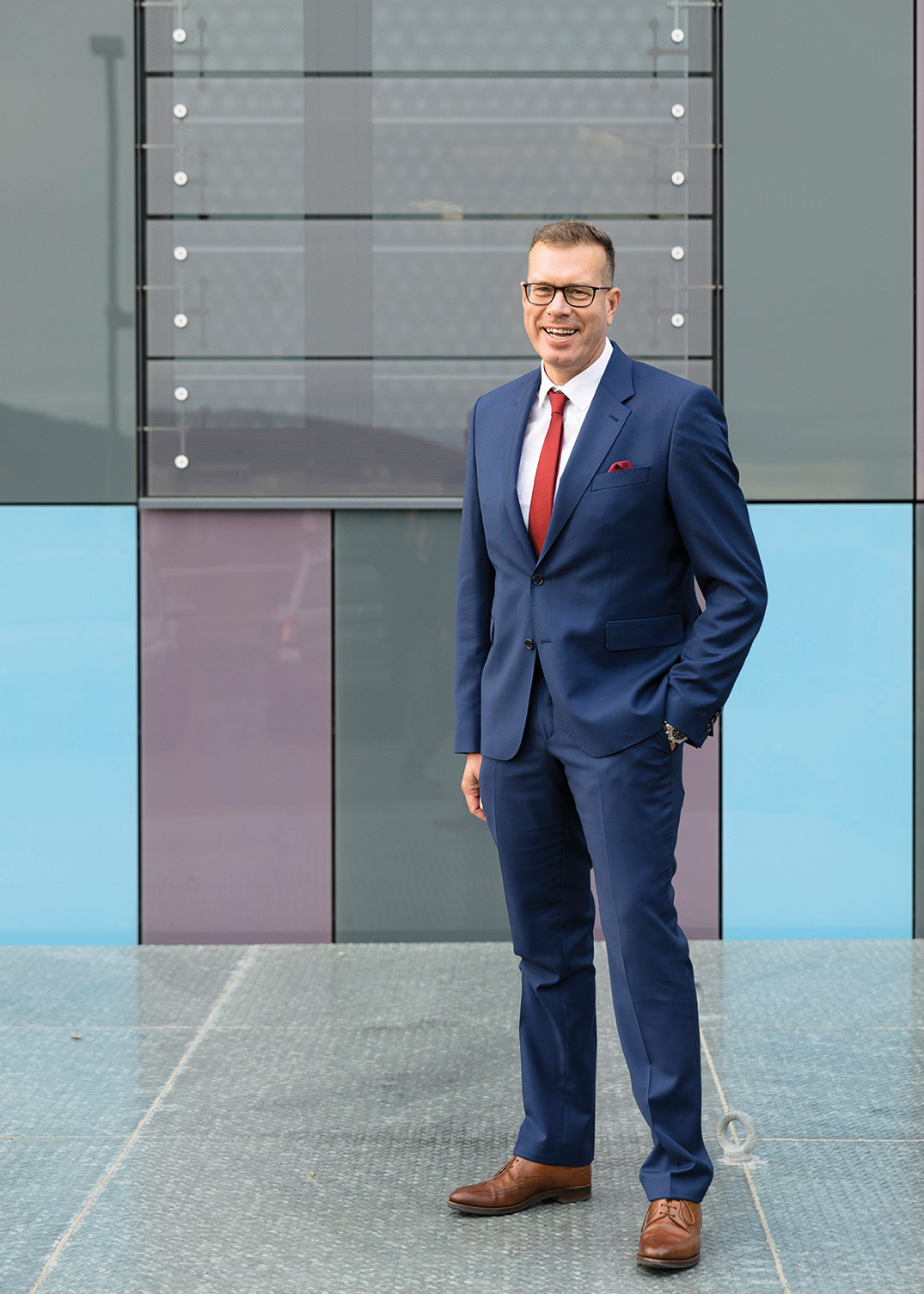“Germany is at a very good vantage point”

One of the leading minds in the field of quantum technologies at Fraunhofer, Prof. Andreas Tünnermann heads up the Fraunhofer Institute for Applied Optics and Precision Engineering IOF at Jena.
Mr. Tünnermann, do you recall when and where you first encountered quantum mechanics?
That was a long time ago. As far as I’m aware, my first encounter with the quantum world took place in the sixth or seventh grade when I had to hand in a paper on the external photoelectric effect. The photoelectric effect was one of the key experiments serving to establish quantum theory. Einstein was awarded the Nobel Prize in Physics in 1921 for his explanation of this effect, with which he proposed that light consists of quanta called photons. The quantum world has always fascinated me, and photons remain the focus of my life as a researcher today. I am a laser man.
What fascinates you about the quantum world?
People learned to control larger ensembles of quanta and put them to use in applications in the ’50s and ’60s. This is known around the world as the first quantum revolution. It gave rise to the laser, and then to the photonics industry, a new line of business that radically changed our society. Just think of the Internet, which would be inconceivable without photonics. The first quantum revolution also laid the foundations for microelectronics. The world as we know it would stand still today without these components. Now we are asking ourselves, “What is the practical added value of being able to control a single quantum? Can it be made to create value of similar macroeconomic significance [as photonics and microelectronics]?”
You launched several major quantum initiatives on behalf of Fraunhofer in recent years. How did quantum research get underway at Fraunhofer IOF?
We have been researching quantum systems and their applications since the institute was founded. For example, we work on lasers and investigate the interactions between light, or photons, and matter. To this end, we collaborate with world-class groups. In many cases, these groups owe their ability to conduct original research into quantum technologies to our components and systems for controlling light. We have been looking into specific questions of the second quantum revolution for more than ten years now, jointly addressing aspects of quantum imaging, quantum sensor technology, quantum communication and quantum computing with partners.
What are the most exciting quantum projects underway now?
Quantum communication is an important topic for our society because data security and data sovereignty are fundamental rights. We want to further the cause of data sovereignty in Europe with QuNET, a project we are currently pursuing with partners to develop the underpinning for secure data transmission and storage. This is where quantum technologies serve to generate keys and share data among the various partners in a communication network. One example of another communications project is Space EPS. Working with the Institute for Quantum Optics and Quantum Information Vienna, we developed and optimized a photon source for a communications satellite on behalf of the European Space Agency. The first prototype was as big as a table with several square meters. It had hundreds of discrete optomechanical components. We streamlined the design, shrinking it to the size of a shoebox. The next stage of development is to bring it down to the size of a pack of cigarettes. We’re on the verge of that now, but my personal goal is to end up with a matchbox-sized format.
In what field will quantum technologies have the most enduring impact on our lives?
Certainly in medicine, as quantum imaging can vastly improve diagnostics. We will need less light to take a picture with future quantum technologies. As I had mentioned, there are many other fields, not least communication.
The four major fields of research are quantum computing, communication, imaging and sensors. Which do you think is most likely to be the first to yield marketable applications?
I am optimistic that marketable real-world applications will soon emerge in communication, imaging and sensors. We are already pursuing projects with companies to this end.
China launched the first quantum satellite into space back in 2016, and Google appears to have recently established its quantum superiority. Has Europe already lost the race for quantum supremacy?
No. I believe we are actually at a very good vantage point. Advances in European research made the project in China possible in the first place. In Europe, we are thriving on excellent basic research conducted with a great deal of continuity. Just think of the funding furnished by the DFG [German Research Foundation] over many decades in this field. It served to establish remarkably competitive university groups to pursue basic research. Applied research is also very strong, especially in quantum communication, imaging and sensors. What we need to do today is join forces with industry to demonstrate the value-adding advantage of quantum technologies over conventional approaches, and create that value.
What does Germany have to do to keep up in terms of applied science?
Above all else, we need skilled personnel and we have to invest in their training. Beyond that, we have to bring different disciplines even closer together and merge the knowledge of engineering and physics. And we need a commitment from industry TODAY so we will be able to bring innovative products to market TOMORROW.
Why should companies start exploring quantum technologies today and what should their priority be?
There’s no question about it – companies need to know if quantum technologies will create more value for their given line of business than the solutions out there today. It is important to get ahead of the curve at an early turn, and develop evaluation criteria that steer them to the right business decisions.